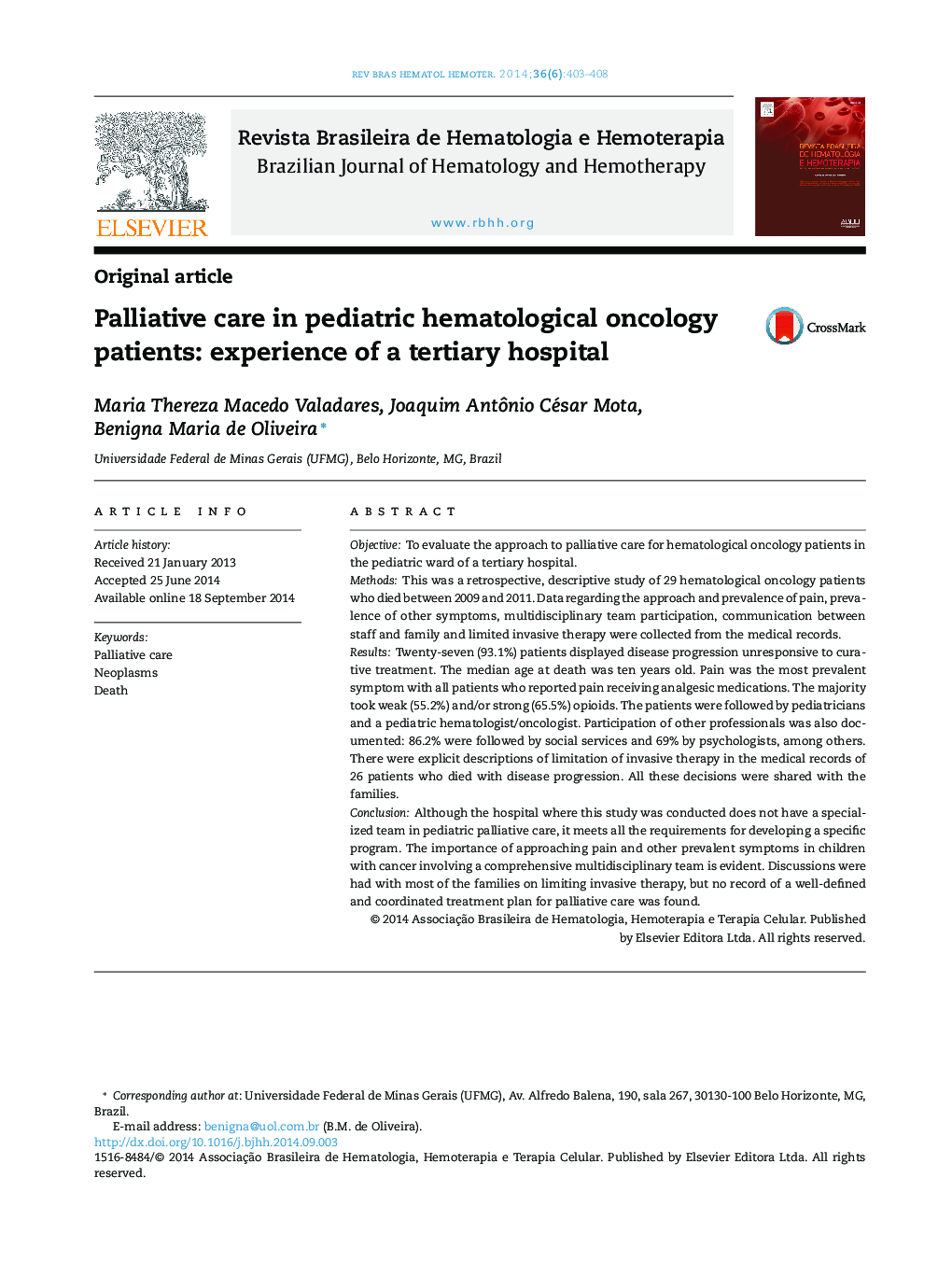| Article ID | Journal | Published Year | Pages | File Type |
|---|---|---|---|---|
| 3333011 | Revista Brasileira de Hematologia e Hemoterapia | 2014 | 6 Pages |
ObjectiveTo evaluate the approach to palliative care for hematological oncology patients in the pediatric ward of a tertiary hospital.MethodsThis was a retrospective, descriptive study of 29 hematological oncology patients who died between 2009 and 2011. Data regarding the approach and prevalence of pain, prevalence of other symptoms, multidisciplinary team participation, communication between staff and family and limited invasive therapy were collected from the medical records.ResultsTwenty-seven (93.1%) patients displayed disease progression unresponsive to curative treatment. The median age at death was ten years old. Pain was the most prevalent symptom with all patients who reported pain receiving analgesic medications. The majority took weak (55.2%) and/or strong (65.5%) opioids. The patients were followed by pediatricians and a pediatric hematologist/oncologist. Participation of other professionals was also documented: 86.2% were followed by social services and 69% by psychologists, among others. There were explicit descriptions of limitation of invasive therapy in the medical records of 26 patients who died with disease progression. All these decisions were shared with the families.ConclusionAlthough the hospital where this study was conducted does not have a specialized team in pediatric palliative care, it meets all the requirements for developing a specific program. The importance of approaching pain and other prevalent symptoms in children with cancer involving a comprehensive multidisciplinary team is evident. Discussions were had with most of the families on limiting invasive therapy, but no record of a well-defined and coordinated treatment plan for palliative care was found.
